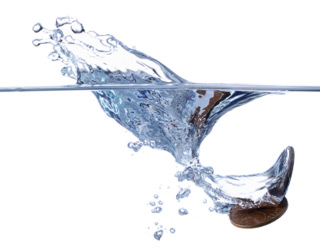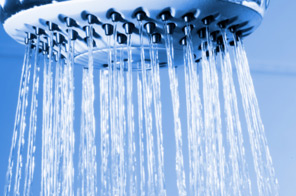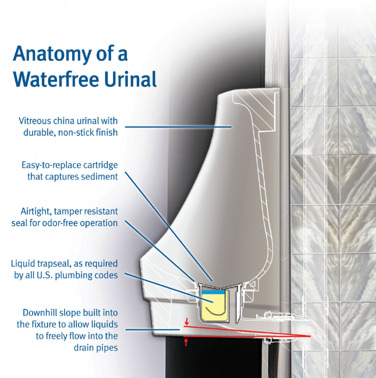Solutions for Water-Use Efficiency
The notion that mankind lives on the “water planet” is a misnomer. Water covers 71 percent of the Earth’s surface but is only 0.023 percent of the total mass – a 1:4,400 ratio of water to terra firma.1 In 1995, 31 countries and 460 million people lived in water-scarce and water stressed areas. By 2050, this is projected to increase to 54 countries and 4 billion people,2 thus underscoring the importance of improving water-use efficiency.
When water is scarce, its value can be priceless. In parts of the world where one can turn a tap on anytime and clean, fresh water flows freely, this value may not register. But for the majority of the world’s population, water is the most serious sustainability challenge facing the human race. A survey of 32,000 people from 15 countries found more than 90 percent perceive freshwater shortage as a serious problem3. Furthermore, the survey found that concerns about access to water and water pollution have outpaced concerns about other well-recognized sustainability challenges, such as global climate change, natural resource depletion and biodiversity loss. Demand and scarcity challenges are leading some experts to predict that water issues will lead to serious global conflict. According to World Policy Journal, Winter 2009/2010, the United Nations estimates 300 potential conflicts over water exist around the world today.
The processing and transporting of water are energy-intensive and have significant environmental and economic impacts. In addition, the cost charged on water bills may not reflect the true value of water, which makes it difficult to cost-justify efficiency upgrades. On the other hand, some very simple tactics exist that may provide immediate relief for this critical challenge.
Where There’s Water, There’s Life
Civilizations have historically developed near ample fresh water supplies. However, modern economic affluence has enabled cities to grow where there’s plenty of sunshine but little water – requiring costly long-distance water diversion. Even diversions from ample supplies are constrained by infrastructure capacity or drought in the supplying watershed, which leaves no choice but to reduce per capita consumption.
“Total water consumption in Los Angeles has not changed in the past 10 to 20 years despite continued population growth,” explains Laer Pearce of Laer Pearce & Associates, consultant to public and private sector organizations. This is due largely to effective conservation programs that include creative public awareness campaigns and rebates that cover some or all of the cost of plumbing fixture upgrades.
With an average annual rainfall of about 15 inches in Los Angeles (L.A.), compared to 50 inches in Atlanta, it’s clear that the U.S.’ most heavily populated area has a serious water constraint. Oddly, L.A. water and sewer rates are half the amount charged in Atlanta, even though Los Angeles has experienced a persistent drought for many years. Pearce explains that pricing difference could be due to the efficiency of L.A. water treatment facilities or opposing schools of thought on pricing, or both. According to Pearce, “Historically, people have felt that water should be free, and that the only charge should be for its treatment and conveyance, but emerging pricing strategies are based on market value or forced conservation through rate penalties for over-use.”

© iStockphoto.com/fotum
The latter has given rise to a trend in water rights acquisition. During the past ten years, T. Boone Pickens has spent $100 million on water rights for portions of the Ogallala Aquifer, an investment that he expects to produce a 10x return or better. Part of his investment includes the purchase of right-of-ways for water pipelines and electric lines that would serve water distribution and wind farms. It’s easy to see how the concept could lead to an OPEC-like scenario for pricing and supply control.
The cost of water procurement varies widely, with importing and desalination consuming seven to 13 times more energy than required for procurement from local sources.4 The silver lining in elevated water costs resulting from high-energy consumption is that efficiency retrofits are easier to justify thanks to accelerated payback. The dollar amount of conservation rebates for plumbing fixtures is typically based upon the cost of the water saved.
This is why waterfree urinals usually receive the highest rebate amounts – sometimes covering the entire purchase and installation cost. Waterfree urinals account for only nine percent of the Metropolitan Water District (MWD) rebated fixtures in Southern California, yet they result in 22 percent of total program water savings.5 In a service area that has long been operating at or near capacity, MWD has no alternative but to reduce per capita water consumption, and nothing is more effective than waterfree urinals.
Putting Price in Balance
To help attract new businesses and jobs, governments may subsidize water and energy costs. By creating artificially low costs, consumption can be difficult to manage because payback scenarios for water-conserving upgrades become skewed. For example, some municipal departments and school systems purchase water and sewer at discounted rates that lengthen the water conserving upgrade payback period.

© iStockphoto.com/dannogan
As a result, sustainable water pricing may be the simplest tactic for improving water supply management because it reflects true costs and involves no infrastructure, new technology or capital costs. It thereby induces efficient water production and consumption, promotes optimization or achievement of least-cost solutions to providing water service, achieves equity in terms of incorporating cost-sharing practices as needed to enhance affordability, and enhances long-term water utility viability.6
Investments in water-use efficiency can reduce water and energy use in commercial buildings while providing favorable returns to business owners. Even with sustainable water pricing, estimating the value of efficiency investment can be difficult as the benefits accrue over time and in response to uncertain factors such as future water and energy prices. This uncertainty may contribute to under-or overinvestment in water-use efficiency. To address this, RAND Corporation has developed a Building Water Efficiency Analysis Model (BEAM) that helps building owners make reasoned judgments about various water-efficiency investment options. BEAM provides an innovative scenario analysis that considers variable utility prices. The free report and BEAM tool can be downloaded at http://www.rand.org/pubs/technical_reports/TR461/.
Policy and Practice
Organizations that do not consider water challenges may be at risk for stricter regulations or natural-or climate change-induced variability in weather conditions. The 2007 through 2009 Southeastern U.S. drought that nearly drained Lake Lanier, a reservoir that provides water for much of Northern Georgia, is a perfect example. Limits on water use, surcharges and increasing block rate pricing were imposed with greater frequency to prevent resource depletion and degradation.
As public concern for fresh water supplies increases, so do expectations of companies’ water-related performance. Water conservation and stewardship scorecards are becoming common in web sites and annual reports to bolster investor and consumer confidence. Corporate water initiatives such as the UN Global Compact CEO Water Mandate have emerged to redefine the way businesses respond to water challenges and contribute to public sector policies that govern water supplies and pricing.
Water/Energy Nexus
Whenever a water tap is opened, electric and gas meters whirl a little faster because the procurement, distribution and treatment of water are an energy-intensive process. As a matter of fact, it is one of the greatest energy consuming processes for some municipalities, which means that a byproduct of water use is greenhouse gas emissions. Water treatment and distribution consumes an average 890 kWh per acre foot while procurement can range anywhere from zero to 4,500 kWh per acre foot. The amount of greenhouse gas emissions depend on the energy generation source, with gas and fossil fuel based generation contributing the greatest amount.
Calculations based on Pacific Institute data and state-by-state power generation profiles illustrate that in the United States the amount of energy required to provide 1 million gallons of water also produces 18,000 pounds of CO2 emissions. According to the California Energy Commission, the conveyance, storage, treatment and distribution of water and wastewater consume 19 percent of California’s electricity, 30 percent of its natural gas and 88 billion gallons of diesel fuel every year – and that was in 2007. Those numbers have since risen. The water/energy nexus is a bonus for federal mandates such as Presidential Executive Orders 13423 and 13514 because the process of satisfying water conservation goals can also help meet greenhouse gas reduction goals.
A Model of Efficiency
Located in Arizona’s Upper San Pedro River Valley, the U.S. Army’s Fort Huachuca has faced water availability and management challenges since its establishment in 1877. Today, the Fort has implemented numerous initiatives to better manage water usage, including projects as simple as installing low-and no-flow plumbing fixtures and as complex as establishing an aquifer recharge program. These projects have reduced annual groundwater pumping by more than 50 percent since 1989 despite the arrival of additional personnel due to base closures across the nation.
To implement the water management plan, three strategies were identified: water conservation, reuse of treated wastewater and recharging the aquifer with treated wastewater and urban water runoff. In just two years these strategies reduced the volume of effluent from one million gallons per day to approximately one-half that amount. Total water pumping has been reduced from 3,207 acre feet in 1989 to 1,492 acre feet in 2004.
The strategy for reducing water consumption includes expansion of education programs, landscape management changes and water-efficient systems. The Fort Huachuca Energy Smart and Water Wise education programs, in conjunction with the University of Arizona Cooperative Extension, educate adults and children living and/or working on the installation. They learn how they impact their environment and what they can do to conserve valuable natural resources.
The Installation Irrigation and Water Management Policy is strictly enforced (violators can lose their privilege to live on base) and accounts for more than 20 percent of the overall annual reduction in water use. Landscape initiatives include collecting rooftop rainwater for irrigation and using ten acres of artificial turf for sports complexes, as well as incorporating xeric landscapes in administrative, academic and housing areas. These plantings feature a variety of attractive native plants that have adapted to low annual rainfall, and contoured grounds that help retain water and minimize irrigation.
Utilities, including air conditioning and plumbing, are also adapted to conserve resources. Refrigerated air-conditioning, rather than evaporative cooling, is used in new residential and industrial buildings, and in building renovations. Plumbing fixture upgrades include front-load washing machines, low-flow toilets and showerheads, and 570 non-water-using urinals. The innovative urinals alone have resulted in 23 million gallons of water savings per year – enough to fill more than 5,100 tank trucks. The importance of water conservation has been embraced by the U.S. Army, which requires all new construction and renovations to include waterfree urinals.
The next strategy, reusing treated wastewater, allows the Fort to maintain select turf areas including a golf course, parade fields and athletic fields by irrigating with treated effluent. The golf course has been irrigated this way since 1969. Treated effluent that is not used for irrigation is used to recharge the aquifer.
Fort Huachuca has created an aquifer recharge program to pump treated effluent, including urban runoff from the Fort, into engineered rapid infiltration basins where water is absorbed into the earth. In nature, absorption is about one inch per day, but with these basins, absorption can be around six inches per day. Currently, the Fort uses seven rapid infiltration basins, the first of which was completed late 2001. Together they allow a total of 1,100 acre-feet per year of absorption.
The success at Fort Huachuca continues to serve as an inspiring example and was cited by the Department of Energy as a Best Management Practice Case Study for Information and Education Programs7.

© iStockphoto.com/AnthiaCumming
Water use reductions (acre feet):
- Front Load Washers – 17
- Xeriscaping – 2.9
- Greywater Reuse – 42
- Evap. Cooler Replacement – 24
- Low-flow showerheads – 15
- Waterfree/less urinals – 40
Effective and efficient tactics for solving the world’s water supply challenge, without requiring infrastructure changes or increased costs, are within grasp. Solutions as simple as fixing leaks in municipal water delivery systems may pay for themselves by increasing the chargeable yield. And, plumbing fixture upgrades pay for themselves with life-cycle cost savings. Most importantly, by placing a value on water equal to its inherent value, mankind will be wiser and better hydrated for the effort.
The Justification for Waterfree Urinals
Less than 1 percent of the world’s urinals are waterfree, but the impact is far reaching and holds tremendous potential. By upgrading one-quarter of the estimated 58 million water-flushing urinals, approximately 580 billion gallons of water would be conserved and 5.2 million tons of CO2 emissions would be decreased annually. The cost savings would provide a boost to corporate and municipal bottom lines while reducing constraints on tight water and energy supplies. These benefits can be immediately realized because waterfree urinals can be easily retrofitted in existing buildings. The concept of waterfree urinals is simple and takes advantage of plumbing standards already in place.
Waterfree urinals appear identical to water-flushing urinals except there is no flush valve and no water supply. A cartridge filter in the base of the urinal acts as a one-way trap to allow urine to flow to drain pipes while blocking odor. The cartridge also collects uric sediment that would otherwise settle in the drain pipes. The engineered flow-path in the urinal, cartridge and drain coupling all include 2-degree downhill pitch to match drain pipes within building walls. Plumbing codes require downhill pitch or slope to allow liquid waste flow away under the power of gravity, which is why a water flush is not necessary for urinals.
Water in urinals provides a breeding ground for bacteria and odor. Also, water flushes produce an aerosol plume that spreads bacteria laden moisture throughout lavatories. By eliminating water from the urinal process, waterfree urinals provide superior hygiene. Even low flow urinals harbor up to five times more bacteria than waterfree urinals. Also, low flow urinals may produce accelerated calcite buildup because the light flow of water can allow hard minerals in the water to precipitate and to attach to the inner wall of drain pipes. With waterfree urinals, struvite deposits from urine remain soft and are flushed away during the cartridge replacement process, which leaves pipes clean and clear of buildup.





























